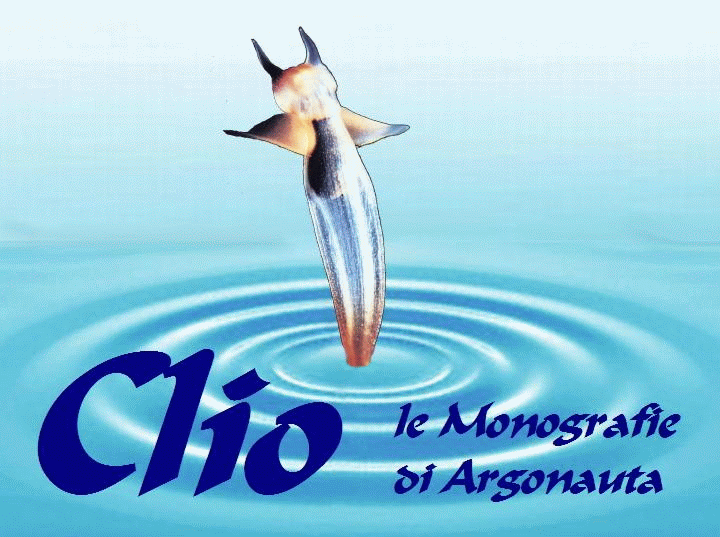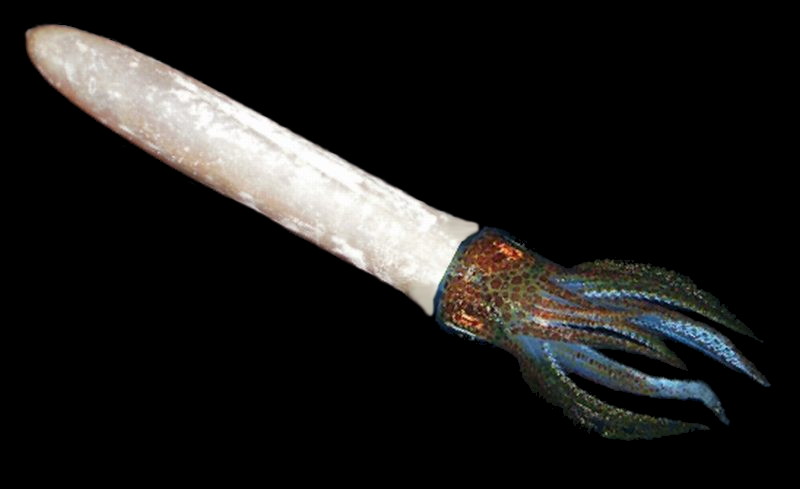
Clio supplemento a Argonauta n. 7-12 2011
 |
 |

La forma vincente
La paleontologia, la scienza che studia gli animali del passato, ci racconta dei progenitori dei molluschi, le Belemniti, una classe di animali ormai estinti che difendevano il loro corpo con una conchiglia a forma di cono allungato simile alla prima figura del modello da noi creato con la plastilina nei vari esperimenti (in fondo alla pagina ecco una nostra ricostruzione immaginaria ottenuta dalla foto di una conchiglia fossile di Belemnite unita alla testa di un mollusco Cefalopode vivente). Com più volte osservato, questa forma doveva essere piuttosto fragile e, quindi, soggetta a spezzarsi a causa di un urto o di un attacco violento. In alto puoi vedere la foto di una conchiglia di un mollusco ancora vivente appartenente alla classe degli SCAPHOPODA. L'evoluzione ha preferito a questa forma, che puoi spezzare facilmente con le mani senza grandi sforzi, quella dei GASTROPODA, ovvero conchiglie avvolte ad elica come il nostro modello. Prova a prenderne una tra quelle che forse hai già raccolto in mare e ti accorgerai subito che non puoi spezzarla con altrettanta facilità della precedente. Quindi la forma "turricolata" delle conchiglie avvolte ad elica si è mostrata molto più efficace per vincere la gara dell'evoluzione ed arrivare fino ai nostri tempi. I molluschi, con Il loro guscio di calcare, rappresentano, dopo gli insetti, il gruppo più numeroso in natura, si stimano circa 100.000 specie diverse.
|
The winning formPaleontology, the science that studies the animals in the past, tells us of the ancestors of molluscs, Belemnites, a class of extinct animals, defending their body with a tapered elongated shell-like figure of the first model we created with clay (picture at bottom of page one of our imaginary reconstruction obtained by the photo of a fossil Belemnite shell combined with the head of a cephalopod mollusks living). I hope you will understand how easy this is rather fragile and prone to cracking due to impact or a violent attack. Above you can see the shape of a shell. You probably already found on the beach are the few living representatives of a class of mollusks, one of SCAPHOPODA. The evolution has preferred this form brittle, break easily as you can with your hands without much effort, that of GASTROPODA, or shells wrapped in propeller as our model. Try to take one of those that you may have already collected at sea and you'll see right away that you can not break it just as easily be the last. So the form "turricolata" shells wrapped in propeller has shown much more effective to win the race and the evolution up to our times. The molluscs, with their shell limestone, are after insects, the largest group in nature, and an estimated 100,000 different species. |

